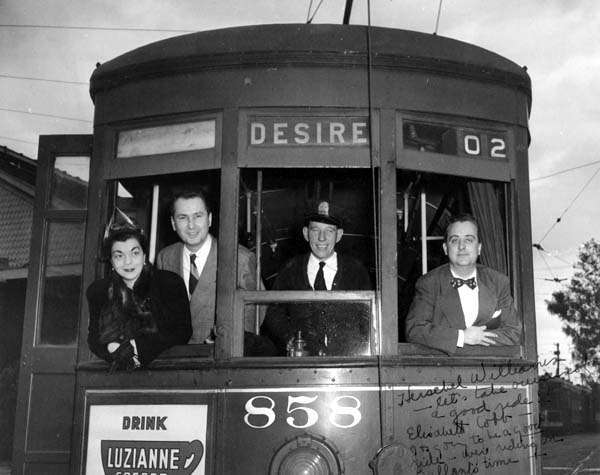New Orleans Culture Of The Time Period
Did you know that Elysian Fields, where the play is set, is a real place?

And so are many of the other places and politics mentioned in Streetcar. This play is very heavily based in the culture of 1940s New Orleans, particularly the French Quarter where we lay our scene, and draws very heavily from real life. There's no fantasy in Streetcar (even if Blanche wants there to be); it's all realism and detail accuracy.
The 1940s were an interesting turning point in New Orleans culture, as well as for much of the South in general. The Old South- an antiquated, and VERY white, understanding of Southern culture that valued politness and hospitality (again, remember these were rich white Southerners who owned plantations and that much of the ""politeness and hospitality"" was an elaborate way to turn the other cheek), was dying out, in favor of the New South- which was more of a workaholic environment where everyone had to put in the hours to survive. There was a wave of immigration during the era, and New Orleans's old districts were often either completely changed or only strengthened by the influx of new residents.
The conflict between the Old and New South is represented, in the play, by Blanche and Stanley respectively. Blanche is aristocratic, naive, and snobby while Stanley is rough, brutish, and a Polish immigrant. Ultimately, while Stanley prevails (suggesting the death of the Old South), neither party is exactly sympathetic, suggesting that there are fatal flaws in both iterations of American Southern culture. (Which there are.)

A lot of the places in this play are real- all of them, from what I could find, in fact.
The titular Streetcar Named Desire refers to the Desire Line of streetcars (basically trolleys) that patrolled down and back through the French Quarter. (Cemeteries Line, also mentioned, was too a real line of streetcars, although it was more properly called the Canal Street line. You can see an old postcard of Canal street in the site header!)
Elysian Fields Avenue is a historic street going down through the French Quarter of New Orleans. It's also interesting for its name- the Elysian Fields were a purgatorial afterlife in Greek Mythology, and that in conjunction with the lines Blanche takes to get there- Desire and Cemeteries- suggests the rise and fall she goes through over the course of the show.
Other locations are more temporary. There was indeed an amusement park at Lake Pontchartrain, as mentioned in the text, but it was demolished some years ago. Even the beer company the characters prefer- JAX Beer- had a factory in New Orleans while it was a functioning brand. While we don't see many of these places owing to the play taking place nearly entirely within Stella and Stanley's apartment, we learn about them through character dialogue and what the characters regularly interact with.